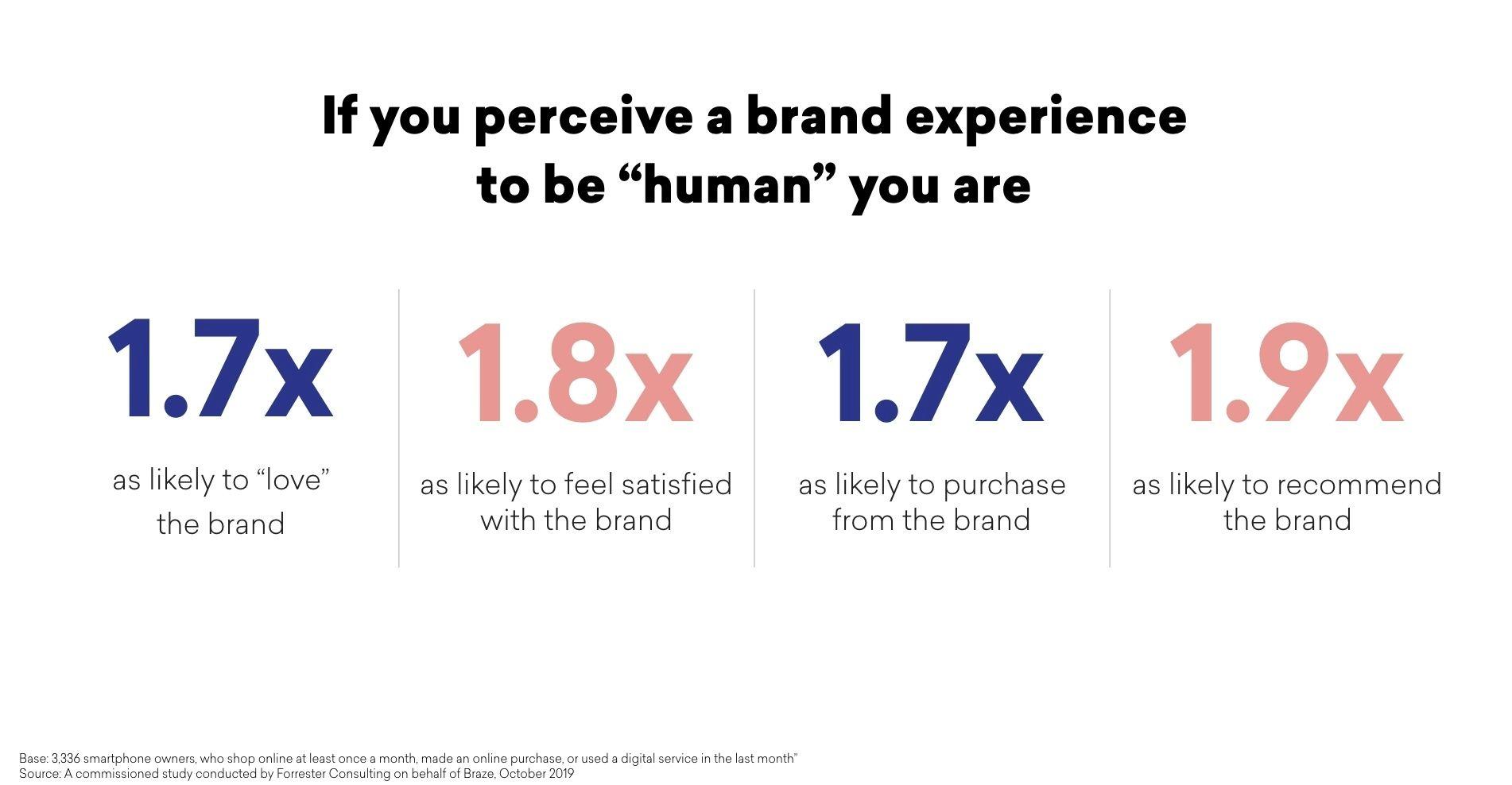The Human Touch: How Customer Engagement Drives Brand Loyalty
Published on July 23, 2020/Last edited on July 23, 2020/3 min read


Adam Swiderski
WriterThe adage that genuine connection is hard to come by in a hyper-connected world feels almost cliche at this point. After all, with just about everyone diving unreservedly into digital-first interaction, the idea that engaging with a brand on your phone is a novelty is about as old-fashioned as scheduling your day around when a TV show comes on.
That said, this ubiquity hasn't made customer engagement in the digital arena easier. On the contrary, with so many brands attempting to reach audiences where they live online, the bar to be cleared to translate engagement to affinity has been raised. Reach remains important, but an expectation now exists that connection will occur in a way that emphasizes humanity and individualized attention over generic, batch-and-blast-style automation. It's that type of engagement that fosters loyalty: In a Capgemini survey, 75% of respondents who identified as highly loyal said that they expected a differentiated shopping experience from brands they patronized.
Emotion Equals Engagement
Recognize that demand is important, but it’s only half the battle. Research indicates there's a gap between brands' perception of their interaction with their audience and consumers' view of the experience. Of marketers surveyed, 90% believed they provided a personalized experience to users, while only 40% of consumers agreed. This can be chalked up to the fact that tried-and-true commerce-driven tactics like loyalty cards and discounts are no longer as important to consumers as communication that provokes an emotional reaction.
According to the Braze Brand Humanity Study (BHS), the top two factors influencing how consumers rate the humanity of an interaction with a brand are: The impression that the particulars of their experience are being recognized, and that they're being spoken to as if by a “regular person.” In other words, it's feelings, not financial incentives, that drive engagement.
Better Humanity Through Technology
The challenge is how to deliver that sort of personalized experience at scale. In what may seem a bit of irony, it is investment in technology that makes it possible for brands to better humanize their communication journey with consumers. Tools such as machine learning (ML), dynamic content, and liquid personalization can elevate mechanical interaction so that customers feel they are experiencing empathy and insight into their journey.
The results speak for themselves. Research from Braze shows that using these strategies to better humanize interactions can produce a 119% increase in mobile push open rates and a 28% increase in email open rates. What's more, consumers who perceive a brand's communication as human are 2.1X more likely to love the brand, 1.8X more likely to recommend it, and 1.8X more likely to make purchases from the brand.

Next Steps
The conclusion couldn't be any clearer: Fostering true engagement is as much about accessing the emotions of consumers to personalize their experience as it is about reaching them. The key to understanding and responding to those emotions is in embracing the technology that allows it to be done at scale.
For more on shifting customer expectations and the marketing practices that can meet them, check out the Brand Humanity Study, conducted by Forrester Consulting on behalf of Braze.
Related Tags
Releated Content
View the Blog
Are you AI-savvy enough to survive? A wake-up call for CMOs

Team Braze

What are contextual bandits? The AI behind smarter, real-time personalization

Team Braze

What is a multi-armed bandit? Smarter experimentation for real-time marketing
